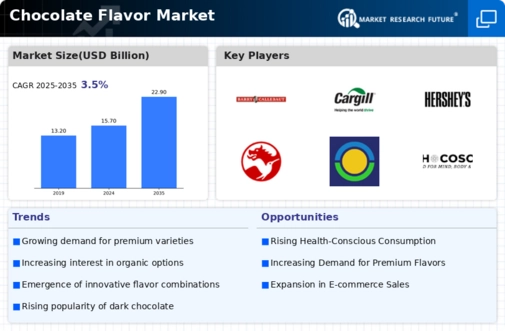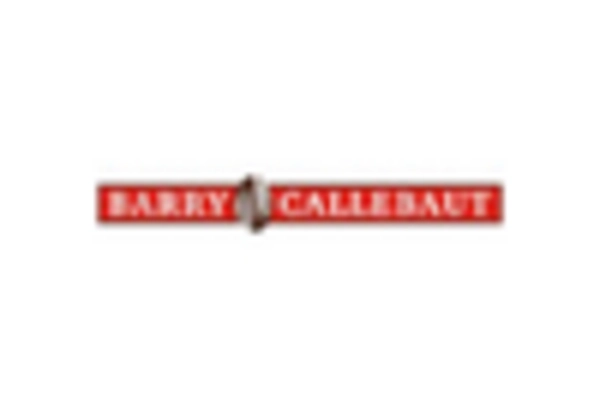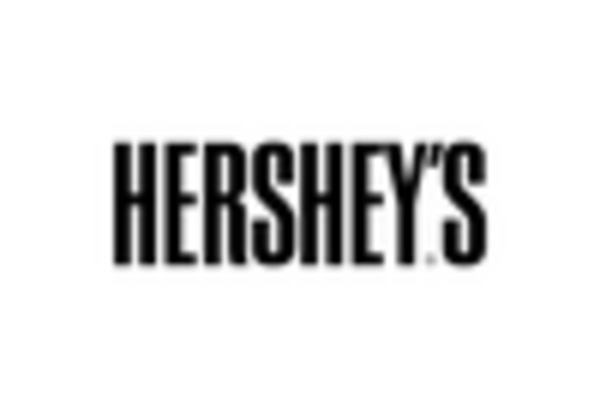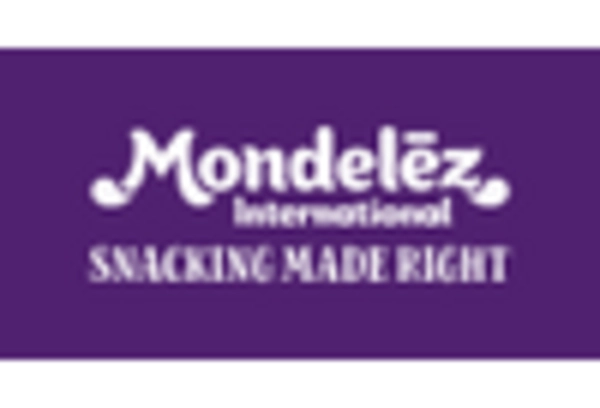Health and Wellness Trends
The Chocolate Flavor Market is increasingly influenced by health and wellness trends. As consumers become more health-conscious, there is a rising demand for chocolate products that offer functional benefits, such as reduced sugar content, added nutrients, or organic ingredients. Recent statistics indicate that the market for healthier chocolate options has expanded significantly, with a growth rate of around 10% in the last year. This shift is prompting manufacturers to reformulate existing products and develop new offerings that align with health trends. The incorporation of superfoods and natural sweeteners is becoming commonplace, appealing to consumers who desire indulgence without compromising their health goals. This focus on wellness is likely to continue shaping the Chocolate Flavor Market, as brands adapt to meet the evolving needs of health-oriented consumers.
Innovative Flavor Combinations
Innovation in flavor combinations is a key driver in the Chocolate Flavor Market. Manufacturers are increasingly experimenting with unconventional ingredients, such as spices, herbs, and exotic fruits, to create unique chocolate experiences. This trend not only caters to adventurous consumers but also aligns with the growing interest in culinary exploration. Data suggests that products featuring innovative flavor pairings have gained traction, with a reported increase in sales of up to 15% in certain markets. As brands strive to differentiate themselves, the introduction of limited-edition flavors and collaborations with renowned chefs is becoming more prevalent. This focus on creativity and novelty is expected to propel the Chocolate Flavor Market forward, as consumers seek out new and exciting taste experiences.
Rising Demand for Premium Products
The Chocolate Flavor Market is experiencing a notable shift towards premium and artisanal chocolate products. Consumers are increasingly willing to pay a premium for high-quality chocolate that offers unique flavors and superior ingredients. This trend is driven by a growing appreciation for gourmet experiences and the desire for indulgence. According to recent data, the premium chocolate segment has seen a growth rate of approximately 8% annually, indicating a robust demand for luxury chocolate offerings. As consumers seek out distinctive flavor profiles, brands are innovating to create products that stand out in a crowded marketplace. This inclination towards premiumization is likely to continue shaping the Chocolate Flavor Market, as manufacturers respond to evolving consumer preferences with innovative and high-end chocolate options.
Sustainability and Ethical Sourcing
Sustainability and ethical sourcing are becoming increasingly critical in the Chocolate Flavor Market. Consumers are more aware of the environmental and social impacts of their purchases, leading to a demand for chocolate products that are sourced responsibly. Brands that prioritize fair trade practices and sustainable farming methods are gaining favor among consumers. Recent surveys indicate that approximately 70% of consumers are willing to pay more for chocolate that is certified organic or fair trade. This trend is prompting manufacturers to invest in sustainable supply chains and transparent sourcing practices. As the emphasis on sustainability grows, it is likely to play a pivotal role in shaping the future of the Chocolate Flavor Market, influencing both consumer choices and brand strategies.
E-commerce Growth and Digital Marketing
The rise of e-commerce is significantly impacting the Chocolate Flavor Market. With the increasing prevalence of online shopping, consumers are more inclined to purchase chocolate products through digital platforms. This shift is supported by the convenience and variety that e-commerce offers, allowing consumers to explore a wider range of chocolate flavors and brands. Recent data shows that online sales of chocolate have surged by approximately 20% in the past year, reflecting changing shopping habits. Brands are leveraging digital marketing strategies to engage consumers, utilizing social media and targeted advertising to promote their unique offerings. This trend towards e-commerce is expected to continue influencing the Chocolate Flavor Market, as more consumers turn to online channels for their chocolate purchases.

















Leave a Comment